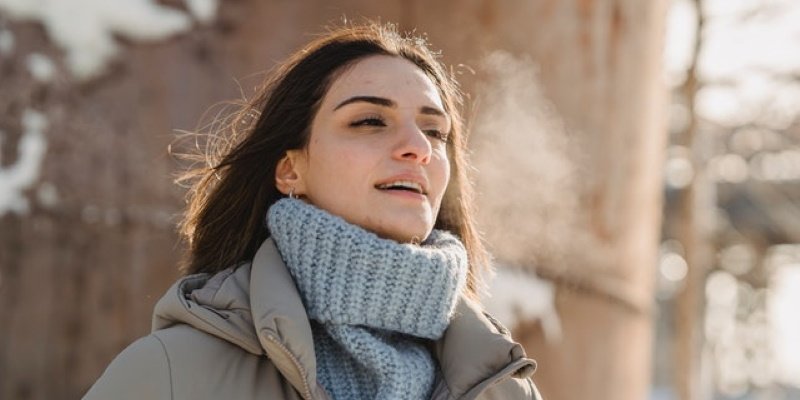
What we’re constantly doing is looking for ways to reawaken that boundless energy we once had as children. That endless hyper spunk of life. What it comes down to is how we breath, as every single breath we take purifies, energizes, and revitalizes every cell in our body with energy.
There are clinical studies which support what Eastern based traditions has known for centuries. Every time we breathe, what we’re doing is granting our body, mind, and soul optimal health and well-being.
The instance we’re born, our very first instinct is to gasp for air, to intake oxygen.
Every cell in our body becomes activated, energized with every new forward breath we consume.
What we adults gradually lose however, is this relentless motivation we once had. What eventually develops are poor breathing habits.
Since breathing isn’t an educational activity we’re taught. To reclaim our youthful energy, what’s required is our conscious awareness.
Breathing Is A Natural Instinct
Breathing is a natural involuntary act which any living creature does for its basic survival. This oxygen flows through every cell of the body without force. This autonomy of breathing allows us to grow.
Because of the hazards we face in life, we begin to subconsciously hold or restrict our breathing under certain situations, as it becomes distorted.
However we happen to be breath allows us to survive yet another day, just not to our peak maximum.
As adults, we’re constantly and desperately looking for ways to revitalize our energy.
We consume coffee, alcohol, sugar, nicotine, vitamins, and other obsessions, wanting to reactivate ourselves. They usually leave us depleted instead.
What we don’t realize is there’s easier ways to recover this energy naturally. These remain dormant somewhere within us, the same unconditional breathing benefits we enjoyed as children.
A Breath Of Life
What breathing does is it affects our respiratory, cardiovascular, muscular, and psychic systems. All, which influences the quality of our memory, sleep, concentration, and energy.
The correlation between the state of our body, mind, and breathing has been associated for thousands of years from the medical practices of China and India (Ayurveda).
Throughout their history, breathing has always been considered inseparable from our spirit, health, and our consciousness.
Breathing is the most readily accessible action for purifying and revitalizing the body. The very nature of breathing reveals how we relate ourselves to the world.
If the breathing happens to be shallow, the body’s vital systems are functioning minimally.
If the breathing is long and deep, the respiratory system is functioning at its peak, providing oxygenation to all the cells of the body.
Learning How We Breathe Better
The very nature of breathing is a rewarding process for everyone. This essential breathing lies in our subconscious involuntary state.
Doing so can be aided, controlled and regulated through forms such as yoga and other healing systems.
What’s closely correlated is the physiology and the psychology of breathing behavior, as breathing plays a major part in determining how we feel on a daily basis.
What proper breathing does, is it increases the amount of oxygenated red blood cells while discharging a waste product known as carbon dioxide.
If carbon dioxide isn’t eliminated through proper respiration, it then converts itself into carbonic acid.
This accumulating carbonic acid then needs to be filtered out by the kidneys, which is the body’s natural source of energy.
Although we pay little attention to this, we suffer its consequences every time we begin feeling tired, anxious, irritated, which slows down our daily activities.
3 Steps To Breathe Properly
With a bit of conscious effort, we can learn to breath better. We need to be aware of our exact breathing process, making the subconscious reaction conscious.
The first step is taking a self diagnosis.
In your attempts to free up and improve your breathing, what you need is to increase the tension of your breathing.
1.) – Observing “Essential” Breathing
Sit comfortably and observe your breathing pattern without altering or changing it in any way. Allow your breath to do what it does.
Then slowly pay attention to how you exhale, allowing your awareness to travel down your exhalation path.
Enjoy the sensation. Experience the pause which occurs at the end of the exhalation.
Stay relaxed and allow it to happen. Trust that the next breath will happen without you needing to reach for it.
2.) -Take Longer Deeper Breaths
This is the core technique when developing breathing awareness, which balances the meridian pathways, the emotions, and the endocrine system.
Begin by inhaling deeply into the abdomen and the diaphragm, and then finally into the chest.
Hold the breath for a few seconds without pressure and then exhale out slowly.
Consciously breathe as smoothly as possible, deeply and gradually, concentrating on making each breath complete.
3.) – Hara Breathing Technique
The Hara is an important energy center which is located approximately three finger widths below the navel, which is also known as the “Sea of Energy.”
What this technique does is it nourishes the internal organs, giving the body additional endurance and power, which strengthens the general condition of the body.
Concentrate on this area while breathing deeply and directly into the lower abdomen. Allow your stomach to come out as you inhale.
Feel the breathing to become expanded into the depths of the stomach, exhale, draw the belly in, then visualize the energy circulating throughout the body.
Every Breath You Take
Breathing is the elixir of life. Proper breathing is a vital resource that’s available to you.
Know that every time you begin feeling confused, tired, stressed, or hurried, you can return to the sanctuary that’s better deeper breathing.
You can replenish and relax yourself by entering the pause once your exhalations end.
Rest in the nurture along with the care that’s provided for you, this within the solace of your essential breathing technique.